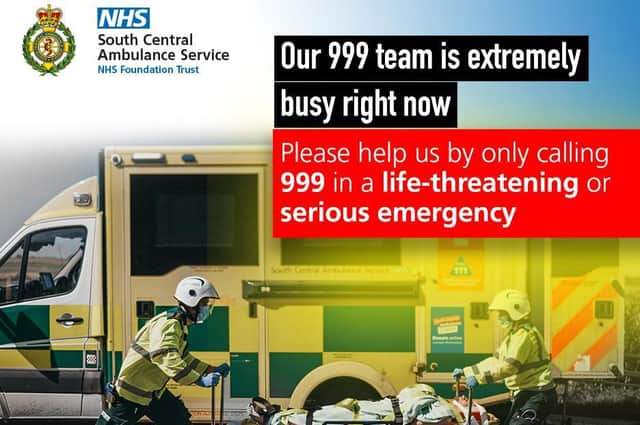Ambulance service covering the Banbury area declares 'critical incident' due to impact of Storm Eunice


The ambulance service which covers the Banbury area, along with the rest of Oxfordshire, Berkshire, Buckinghamshire, and Hampshire has declared a 'critical incident' due to the impacts of Storm Eunice.
South Central Ambulance Service NHS Foundation Trust (SCAS) said higher than normal demand on the 999 service, along with disruptions to travelling due to road and bridge closures have led to the situation.
Advertisement
Hide AdAdvertisement
Hide AdIt is hoped that once the worst of Storm Eunice has passed the South Central region, the level of demand will fall to expected seasonal levels and, with travel disruption reducing, the critical incident can be stood down.
Paul Jefferies, Assistant Director of Operations, said: “Declaring a critical incident allows us to seek further support from our partners, and alerts the wider healthcare system to our existing challenges brought about by Storm Eunice in reaching patients as quickly as we would like. We will continue to focus on reaching those patients with life-threatening or serious injuries and illnesses first, and unfortunately there will be unavoidable delays in getting to those patients with less urgent needs for which we apologise in advance. We would ask such patients to help us by seeking alternative treatment or advice via NHS 111 online or by calling 111, local urgent care centres or speaking to your GP or local pharmacist.”
As part of its critical incident response, SCAS is:
- Ensuring all clinically qualified managers and supervisors are available to respond to 999 emergencies
- Requesting off duty staff to come in and work extra hours
- Mobilising additional vehicles from its South Central Fleet Services partner
- Utilising its committed volunteer community first responders and co-responders as much as possible